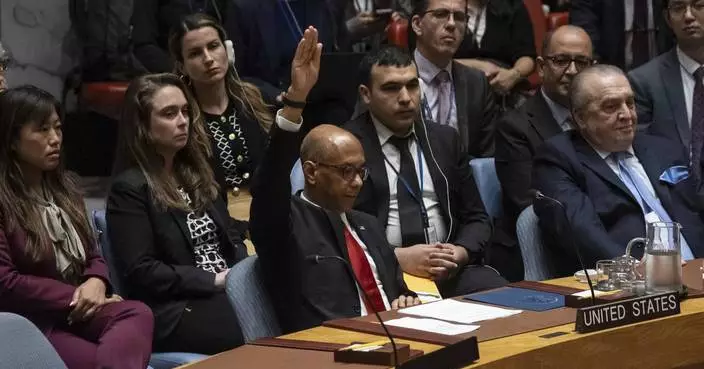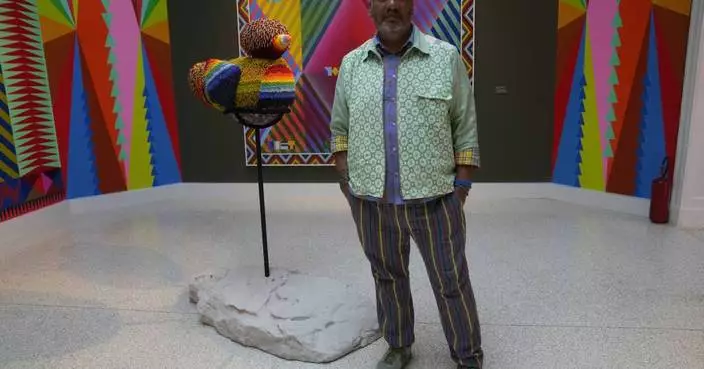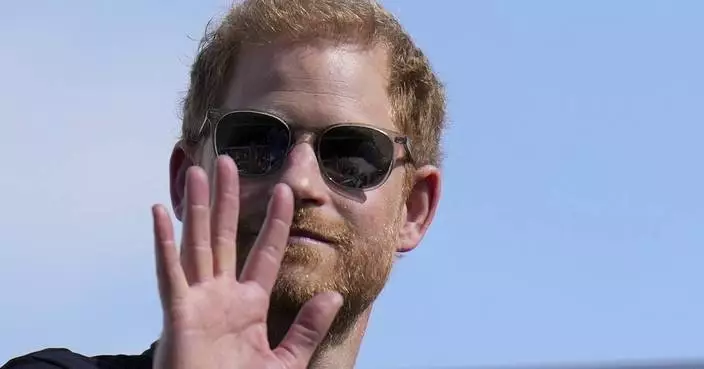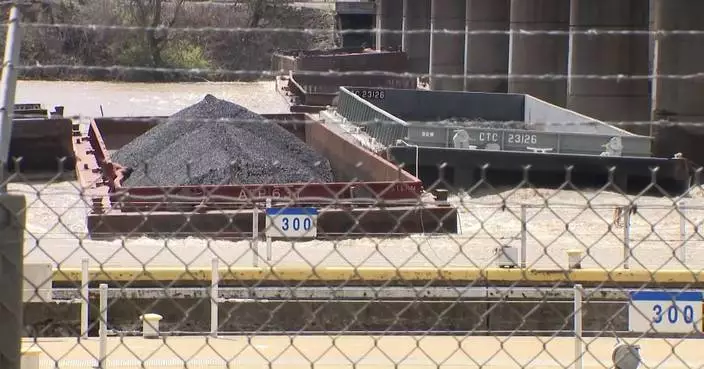A nonprofit organization that searches for the remains of U.S. servicemen lost in past conflicts has found what officials believe are the graves of more than 30 Marines and sailors killed in one of the bloodiest battles of World War II.
A team working on the remote Pacific atoll of Tarawa found the graves in March, said Mark Noah, president of History Flight.
The remains are believed to belong to Marines and sailors from the 6th Marine Regiment killed during the last night of the three-day Battle of Tarawa.
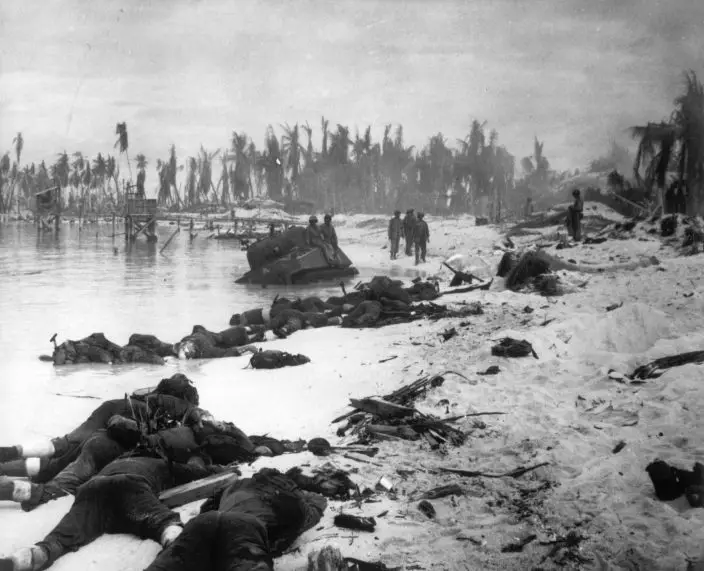
FILE - In this Nov. 1943 file photo, sprawled bodies are seen on the beach of Tarawa atoll testifying to the ferocity of the battle for this stretch of sand during the U.S. invasion of the Gilbert Islands. A nonprofit organization that searches for the remains of U.S. servicemen lost in past conflicts has found what officials believe are the graves of more than 30 Marines and sailors killed in one of the bloodiest battles of World War II. (AP Photo, FILE)
The Defense POW/MIA Accounting Agency expects to pick up the remains and fly them to Hawaii next month, said Dr. John Byrd, director of agency's laboratories. Military forensic anthropologists will then work to identify them using dental records, DNA and other clues.
More than 990 U.S. Marines and 30 U.S. sailors were killed in the 1943 Battle of Tarawa, after the U.S. launched an amphibious assault on the small island some 2,300 miles (3,700 kilometers) southwest of Honolulu.
Marines and sailors quickly encountered Japanese machine-gun fire when their boats got stuck on the reef at low tide. Americans who made it to the beach faced brutal hand-to-hand combat.
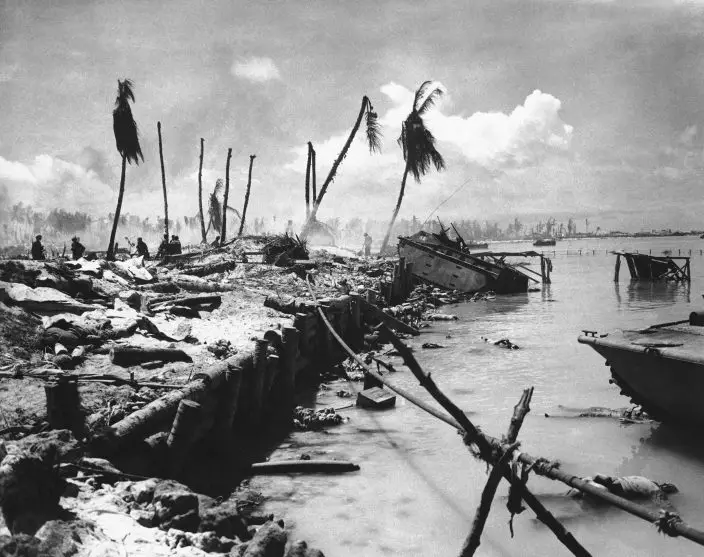
FILE - In this November 1943 file photo, bodies and wrecked amphibious tractors litter a battlefield, after U.S. Marines from the 2nd Division forced back the Japanese on Betio island in the Tarawa Atoll, Kiribati. A nonprofit organization that searches for the remains of U.S. servicemen lost in past conflicts has found what officials believe are the graves of more than 30 Marines and sailors killed in one of the bloodiest battles of World War II. (AP Photo, File)
The U.S. military buried its men in makeshift cemeteries where they fell. But Navy construction battalion sailors removed markers for these graves when they hurriedly built runways and other infrastructure to help U.S. forces push farther west across the Pacific toward Japan.
History Flight has recovered the remains of 272 individuals from Tarawa since 2015, when it began excavating under a contract with the Defense Department, Noah said. He estimates there are at least another 270 to be found.
Tarawa is now part of the Republic of Kiribati. Its government allowed History Flight to demolish an abandoned building in its latest search. Many of the graves were underneath it.
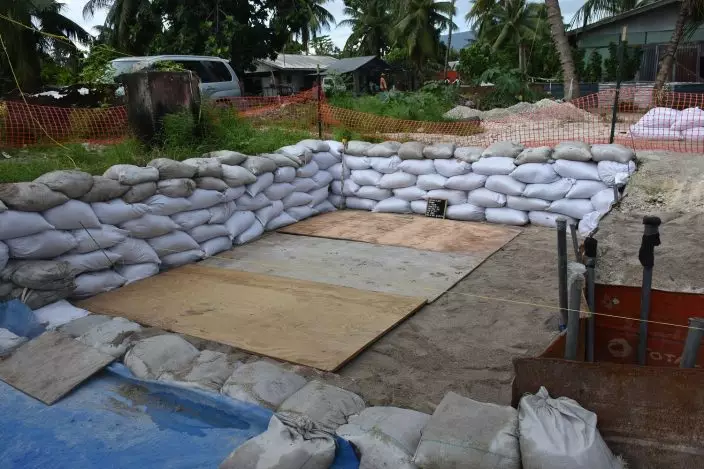
This June 1, 2019 photo provided by History Flight shows graves of U.S. servicemen in Tarawa, Kiribati. A nonprofit organization that searches for the remains of U.S. servicemen lost in past conflicts has found what officials believe are the graves of more than 30 Marines and sailors killed in one of the bloodiest battles of World War II. (Eric AlbertsonDefense POWMIA Accounting AgencyHistory Flight via AP)
A large number of graves also are below the water table, meaning History Flight workers must pump water from the site each day to excavate.
Byrd said the Army Graves Registration Service excavated some of Tarawa's temporary cemeteries in the late 1940s but left behind parts of individuals during this process.
History Flight is now thoroughly excavating these gravesites, leading them to find some partial remains that have been matched with those already buried as "unknowns" in a national cemetery in Honolulu. The Defense POW/MIA Accounting Agency dug up these remains in 2017 to make additional identifications.
The agency has identified more than 100 individuals excavated from Tarawa and the Honolulu cemetery since 2015.
SEOUL, South Korea (AP) — The United States and its allies are discussing options “both inside and outside the U.N. system” to create a new mechanism for monitoring North Korea over its nuclear weapons program, the American ambassador to the United Nations said Wednesday.
Russia last month vetoed a U.N. resolution in a move that effectively abolished monitoring by U.N. experts of Security Council sanctions against North Korea, which prompted Western accusations that Moscow was acting to shield its arms purchases from North Korea to fuel its war in Ukraine.
“I look forward to engaging with both the Republic of Korea and Japan, but like-minded (countries) as well, on trying to develop options both inside the U.N. as well as outside the U.N. The point here is that we cannot allow the work that the panel of experts were doing to lapse,” U.S. Ambassador Linda Thomas-Greenfield told a news conference in Seoul, using the formal name for South Korea.
Thomas-Greenfield didn’t provide specific details about U.S. discussions with allies and other partners, including whether an alternative monitoring regime would more likely be established through the U.N. General Assembly or with an independent entity outside of the U.N.
Thomas-Greenfield met with South Korean Foreign Minister Cho Tae-yul on Monday and they discussed unspecified “next steps to ensure a continuation of independent and accurate reporting” of North Korea’s illicit weapons development activities, according to her office.
Thomas-Greenfield said it was clear that Russia and China, which abstained from voting on the U.N. resolution vetoed by Moscow, will continue to try to block international efforts to maintain monitoring of U.N. sanctions against North Korea. She criticized Russia for violating those sanctions with its alleged arms purchases from North Korea, and China for protecting the North from being held accountable.
Moscow and Beijing have thwarted U.S.-led efforts to tighten U.N. sanctions on North Korea over its ramped-up ballistic missile testing since 2022, underscoring a divide between permanent Security Council members that deepened over Russia’s war on Ukraine.
“I don’t expect that they will cooperate or agree with any efforts that we make to find another path, but that is not going to stop us from finding that path moving forward,” Thomas-Greenfield said.
Thomas-Greenfield also briefly addressed questions about tensions in the Middle East. When asked about the Palestinian Authority's request to have full U.N. membership, she said a U.N resolution in support of that request would not contribute to finding a two-state solution to the Israeli-Palestinian conflict.
“President Biden has said categorically that we support a two-state solution for addressing the situation in the Middle East, where Palestinians will have a state of their own and Israel is secure in their state, and we are working on the ground to get to that place as quickly as possible,” she said.
“We do not see that doing a resolution in the Security Council will necessarily get us to a place where we can find a ... two-state solution moving forward," she added.
Tensions on the Korean Peninsula are at their highest point in years, as North Korean leader Kim Jong Un has accelerated his weapons demonstrations and issued provocative threats of nuclear conflict against rivals.
The United States, South Korea and Japan have responded by expanding their combined military exercises and sharpening their nuclear deterrence strategies built around strategic U.S. assets.
In a telephone conversation on Wednesday, South Korean President Yoon Suk Yeol and Japanese Prime Minister Fumio Kishida agreed to further strengthen three-way cooperation with Washington to counter North Korean threats and other regional challenges amid “deepening uncertainties in the international situation,” Yoon’s office said.
The Security Council imposed sanctions after North Korea’s first nuclear test explosion in 2006 and tightened them over the years in a total of 10 resolutions seeking — so far unsuccessfully — to cut funds and curb its nuclear and missile programs. The last sanctions resolution was adopted by the council in December 2017.
The Security Council established a committee to monitor sanctions, and the mandate for its panel of experts to investigate violations had been renewed for 14 years until last month.
Russia’s U.N. Ambassador Vassily Nebenzia told the Security Council before last month’s vote that Western nations are trying to “strangle” North Korea and that sanctions are losing their “relevance” in preventing the proliferation of nuclear weapons in the North.
In its most recent report circulated last month, the panel of experts said it is investigating 58 suspected North Korean cyberattacks between 2017 and 2023 valued at approximately $3 billion, with the money reportedly being used to help fund its weapons development.
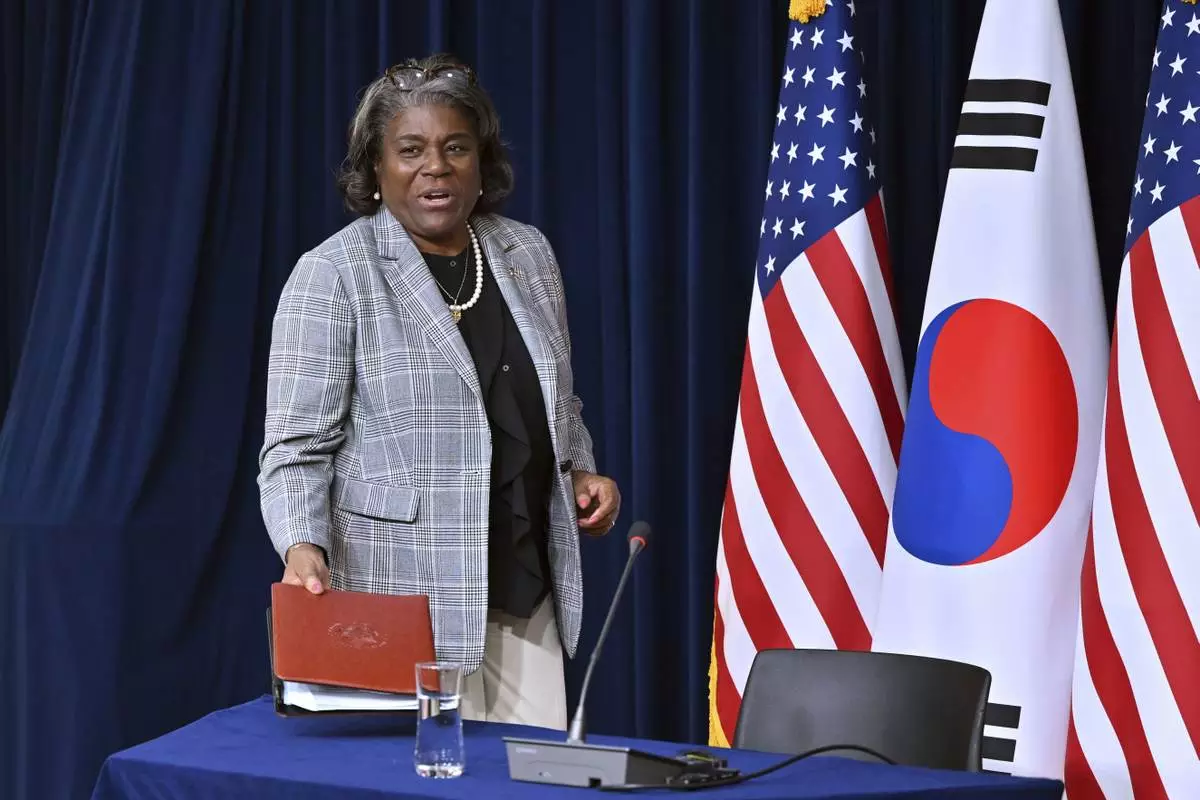
U.S. Ambassador to the United Nations Linda Thomas-Greenfield arrives to attend a press conference at the American Diplomacy House in Seoul Wednesday, April 17, 2024. (Jung Yeon-je/Pool Photo via AP)

U.S. Ambassador to the United Nations Linda Thomas-Greenfield speaks during a press conference at the American Diplomacy House in Seoul Wednesday, April 17, 2024. (Jung Yeon-je/Pool Photo via AP)
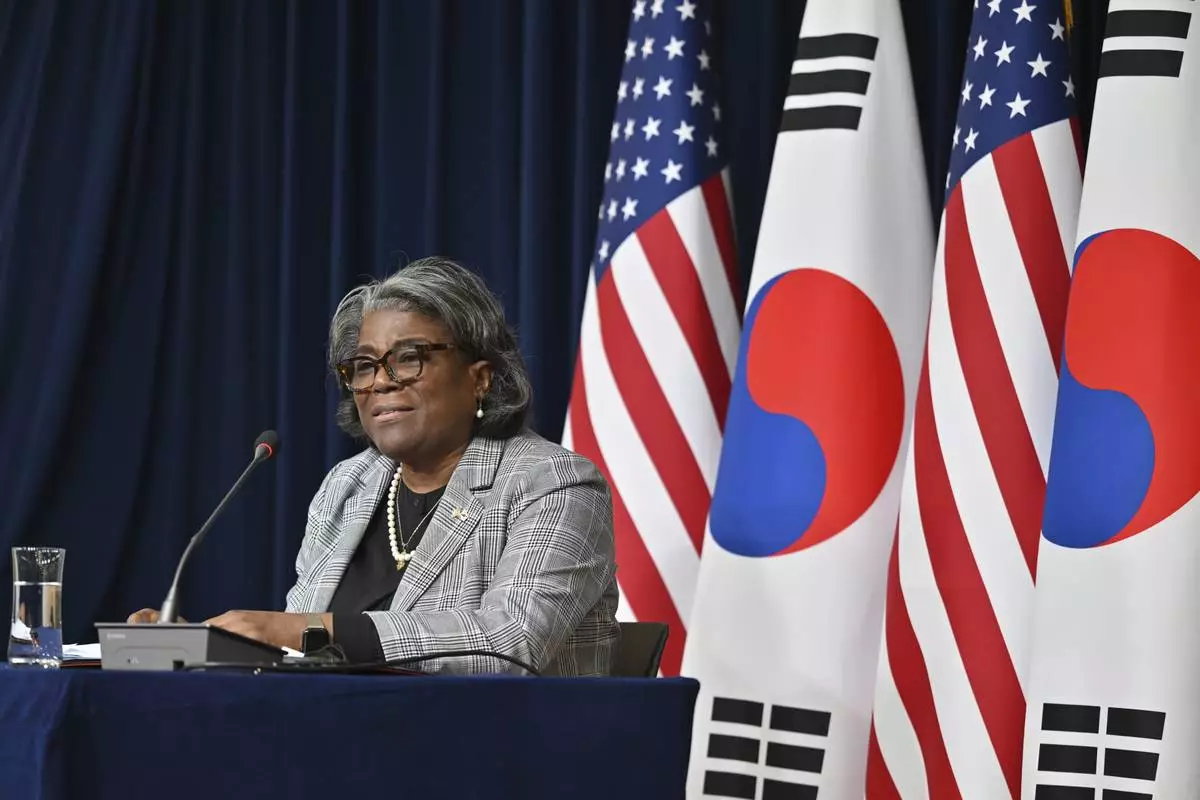
U.S. Ambassador to the United Nations Linda Thomas-Greenfield speaks during a press conference at the American Diplomacy House in Seoul Wednesday, April 17, 2024. (Jung Yeon-je/Pool Photo via AP)

U.S. Ambassador to the United Nations Linda Thomas-Greenfield speaks during a press conference at the American Diplomacy House in Seoul Wednesday, April 17, 2024. (Jung Yeon-je/Pool Photo via AP)
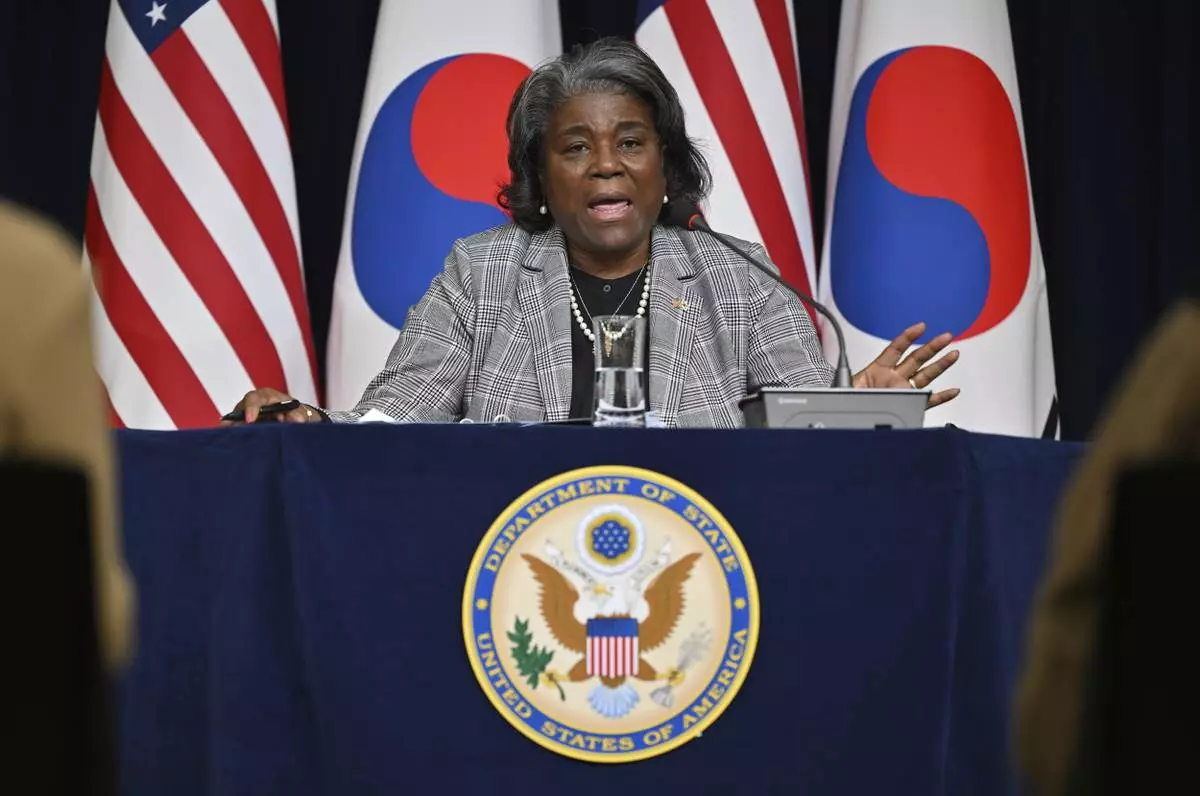
U.S. Ambassador to the United Nations Linda Thomas-Greenfield speaks during a press conference at the American Diplomacy House in Seoul Wednesday, April 17, 2024. (Jung Yeon-je/Pool Photo via AP)
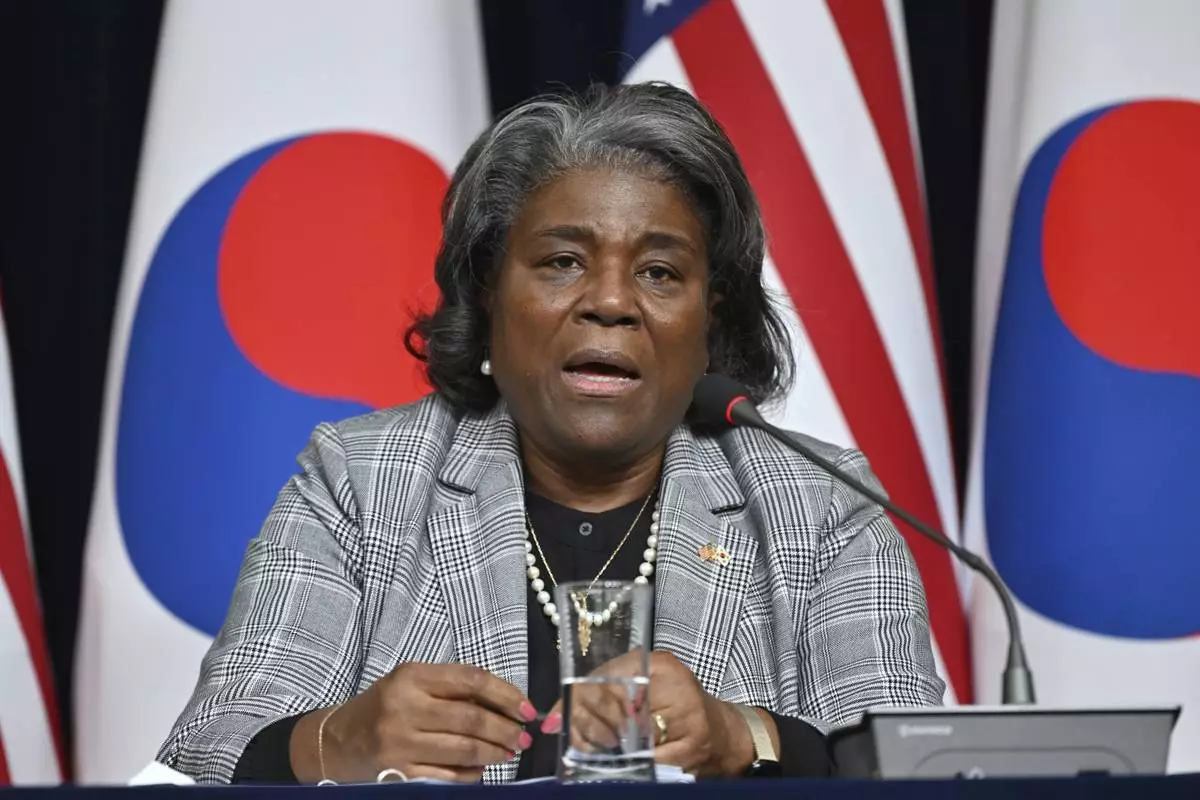
U.S. Ambassador to the United Nations Linda Thomas-Greenfield speaks during a press conference at the American Diplomacy House in Seoul Wednesday, April 17, 2024. (Jung Yeon-je/Pool Photo via AP)












